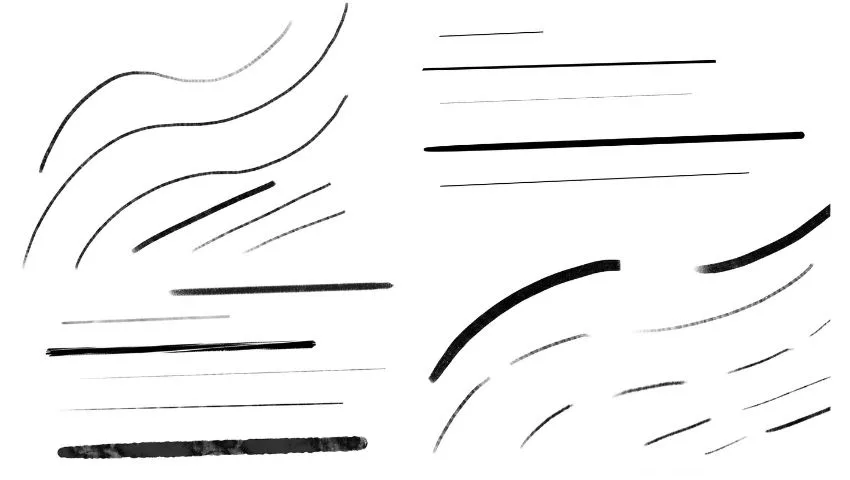The line in art is one of the elements of art that forms its most deep and fundamental aspects.
There are countless different types, functions, and variations in line, and their purposes are similarly multifaceted.
Mastering the meaning of a line and its use in art is one of the essential keys to becoming a great artist, not unlike the word for a writer.
In the article, we’ll break down the line in various ways to see it under different lights, perhaps unlocking new ways to consider and use line in your work, or at least better to understand the use of lines in other artworks.

What is a Line?
Although it seems obvious that we know what a line is, its form is fundamental in art.
The slightest change can turn a line from serious to whimsical, from analytical and structural to emotional or romantic.
At its heart, a line is an extended dot in space.
Given enough help, this extended dot can create a whole illusion of space, with objects in space appearing due to its power.
The simplest way to differentiate lines is straight or curved.
Straight lines
Straight lines, including sharp angles, tend towards the more analytic, geometric, and structural.
They are often the architectural lines of buildings or the structured lines of perspective.
In nature, curved lines are more common.
This is because they are more organic, natural, and represent flow and movement.
Lines evoke different kinds of feelings.
There are many ways to categorize lines to help sort out what types of feeling lines will give.
Context matters, so no one way of looking at a single line will tell you everything you need to know.
It ultimately depends on the relations between the lines as well.
Thus, one slightly more complex way to categorize lines is by five types: vertical, horizontal, diagonal, curved, and freeform.
Vertical lines
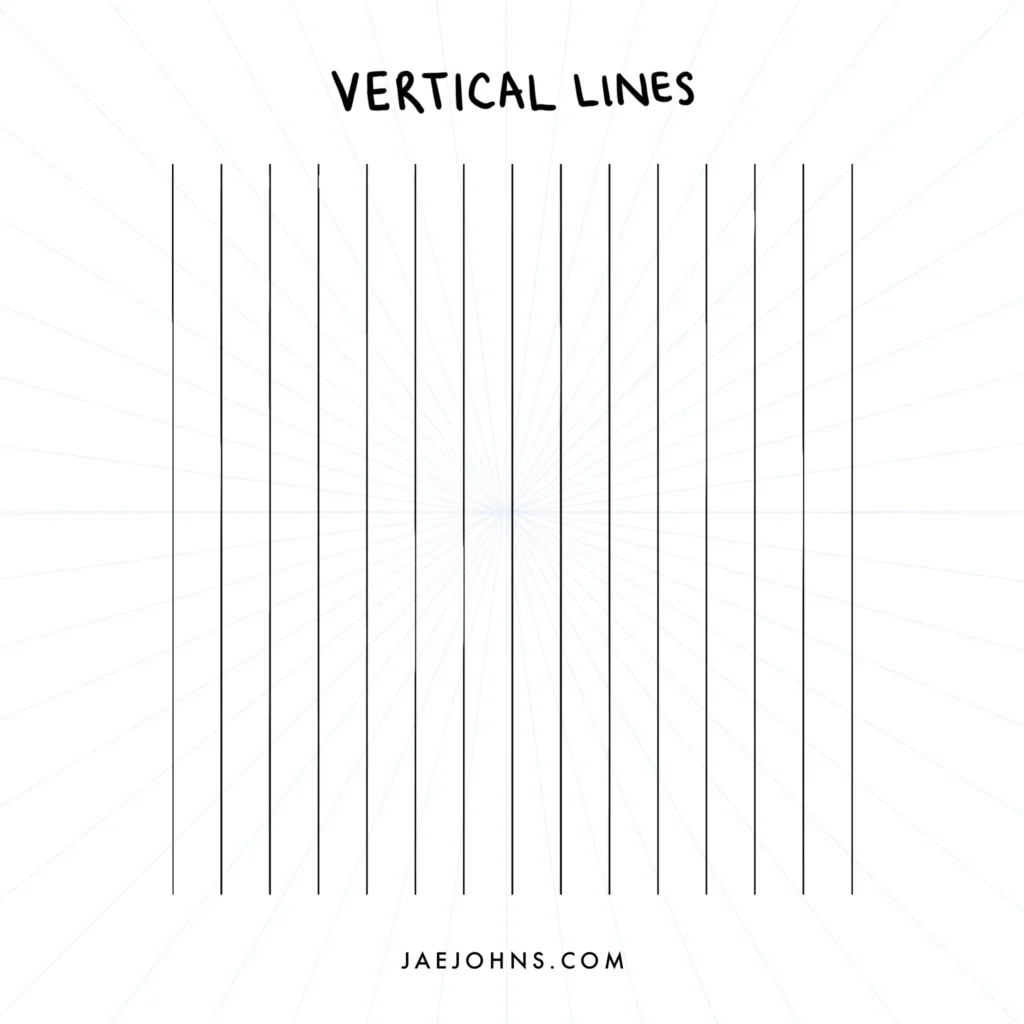
Vertical lines are drawn up and down and are perpendicular to horizontal lines.
They provide height, strength, and authority.
Their movement upwards towards the sky or downwards towards a hole or cliff can each provide power and impact.
Horizontal lines
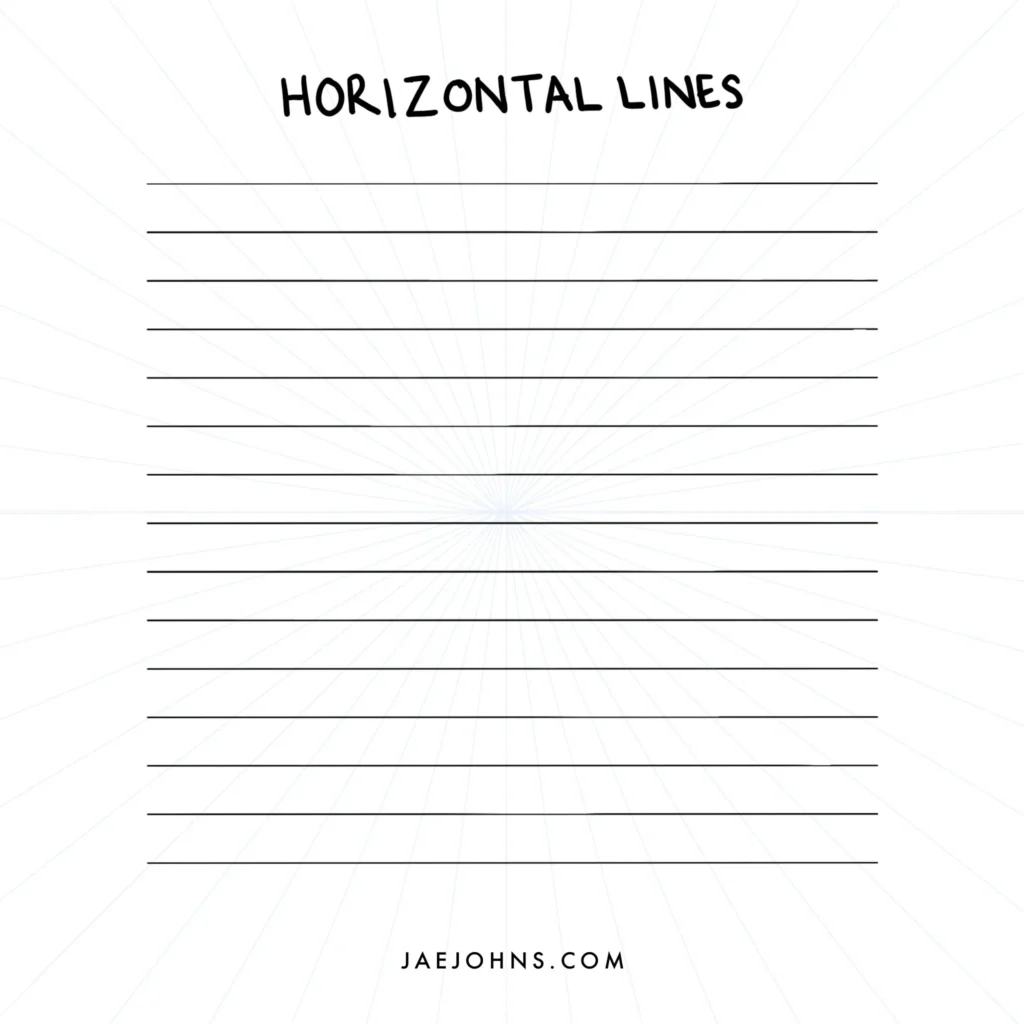
These are drawn parallel to the horizon and perpendicular to vertical lines.
Their movement from left to right suggests distances, stability, and perhaps a sense of calm.
Horizontal lines come from the idea of being parallel to the horizon itself, which is probably one of the most fundamental forms of this line.
Diagonal lines or Slanted lines
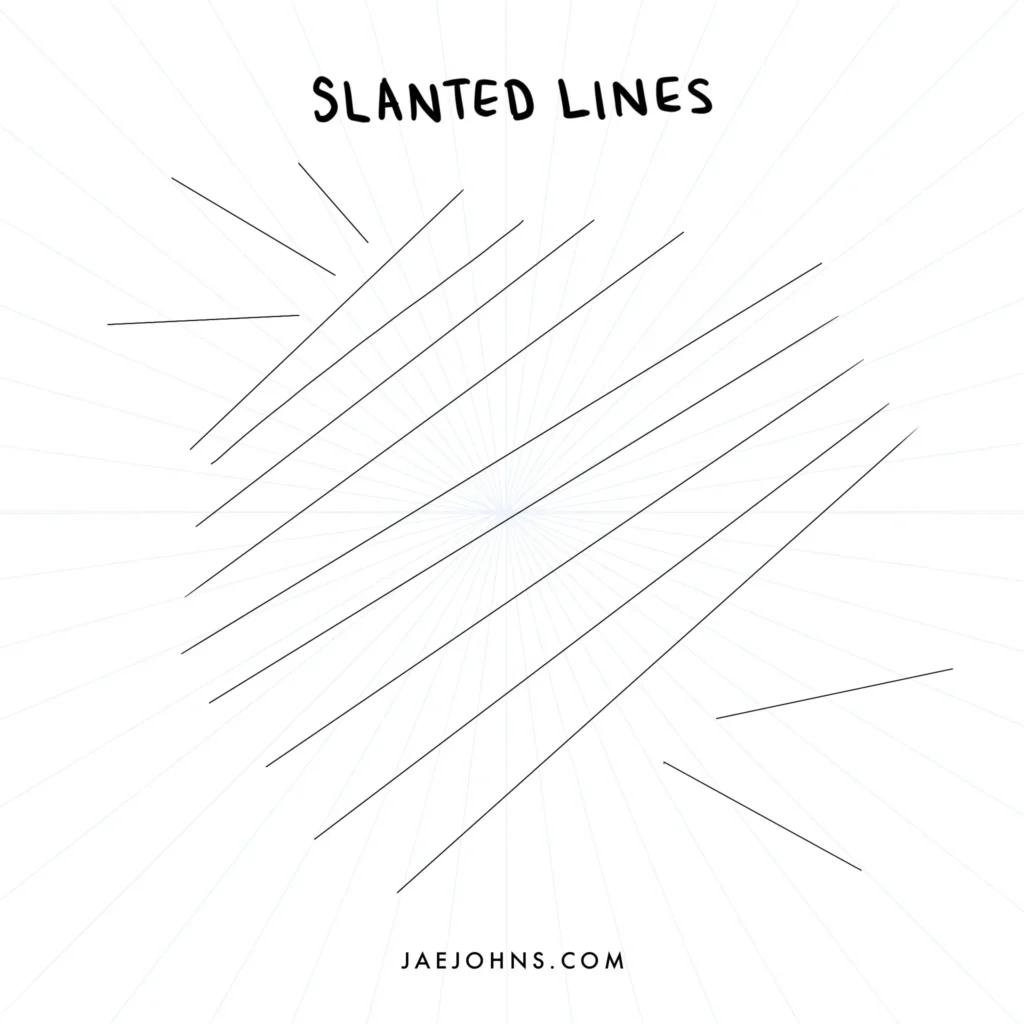
Diagonal lines can be slanted at any angle between horizontal and vertical.
As a result, they are often more dynamic, representing the speed, movement, or a general lack of stability.
Diagonals are crucial for perspective drawing and painting for movement towards the vanishing point or points.
Curved lines
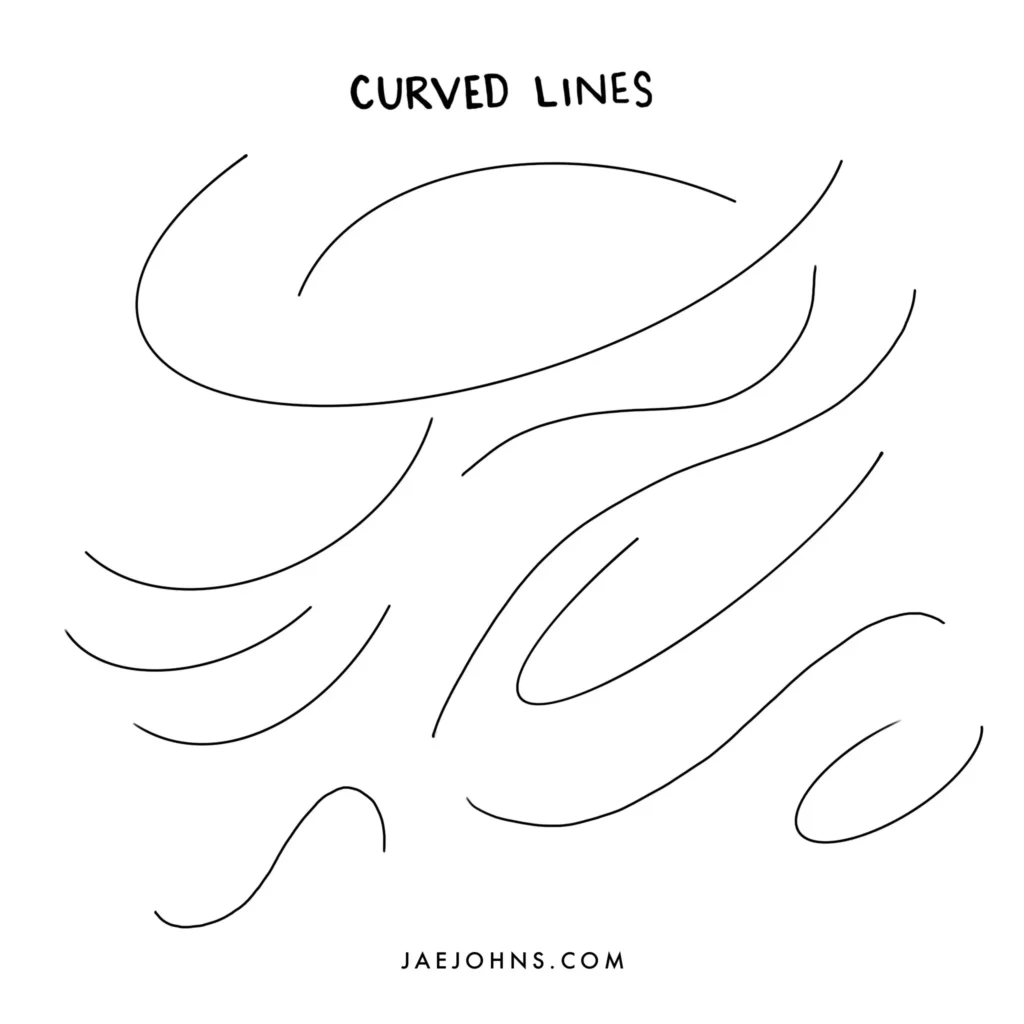
These bend end and gradually change direction without sharp angles.
It can be just one slight turn or become wavy lines or even spiral.
Curved lines represent the ease of nature, of sensation, and generally form the primary lines of our natural surroundings.
Freeform lines
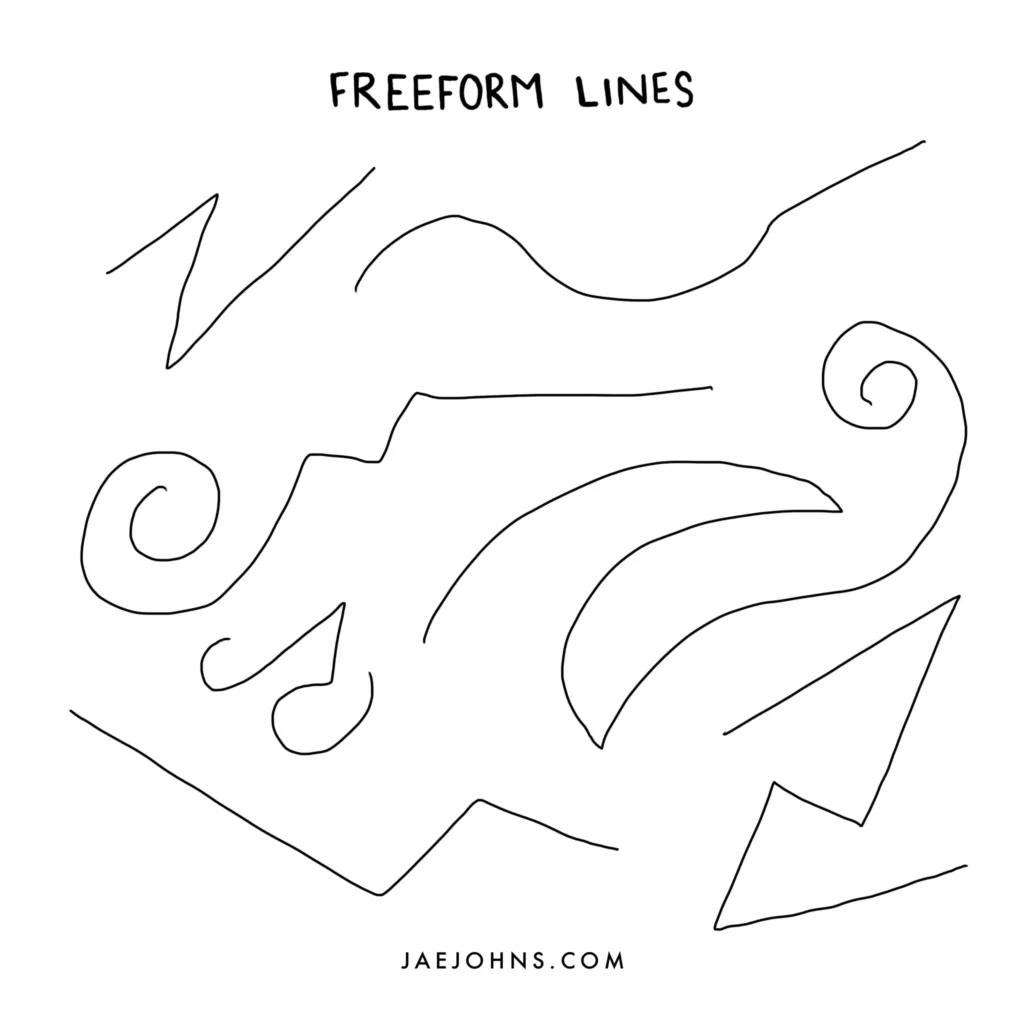
Freeform lines can take the form of a zigzag line or a mixture of curves and straight forms.
In a way, they are the most common line form but can also simply be broken up into a series of line fragments of the more elemental forms.
Variation in Lines
Using the five main types of lines, you can use variations in length, thickness, texture, direction, curvature, and more to create all kinds of different moods and senses.
Length
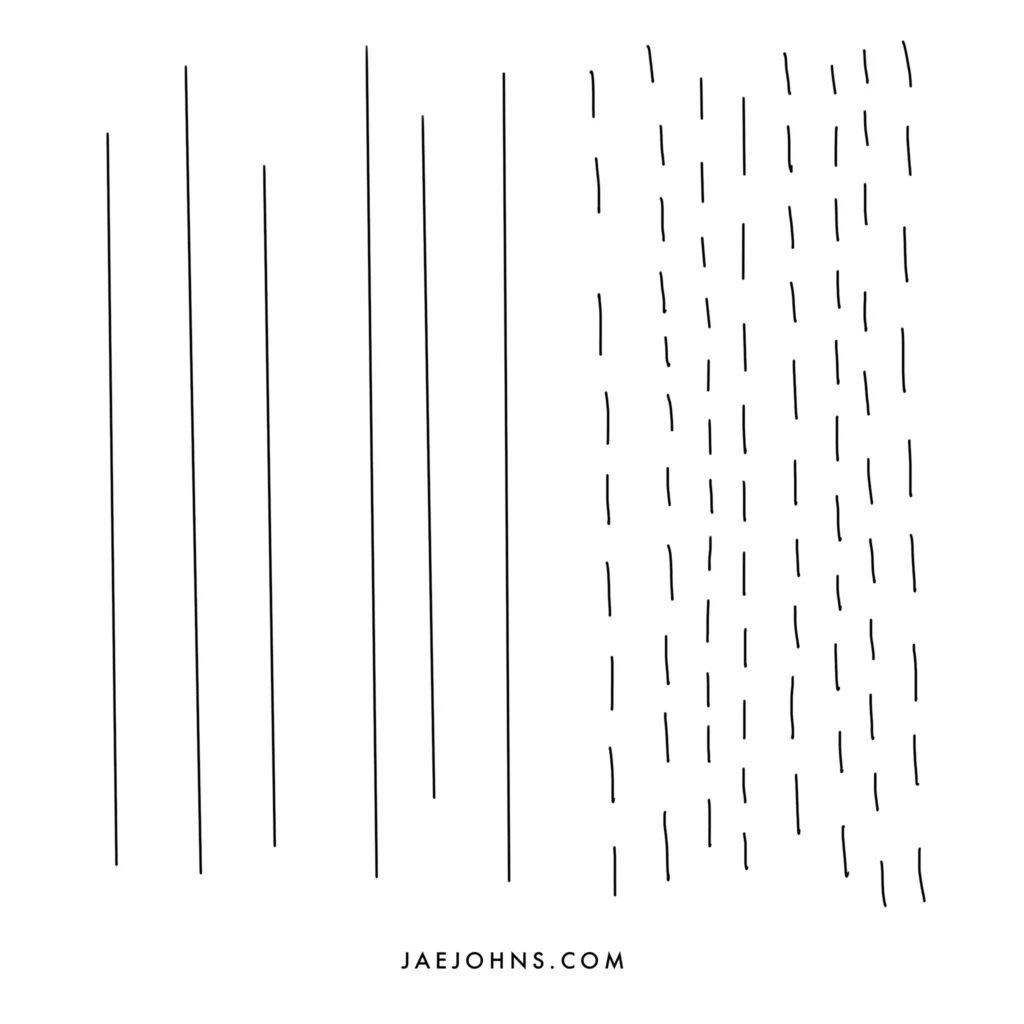
Length can imply distance and height depending on the orientation.
Longer lines tend to symbolize strength, stability, and rigidity.
Shorter lines tend to be cuter, more nostalgic, or can feel close and claustrophobic.
Thickness
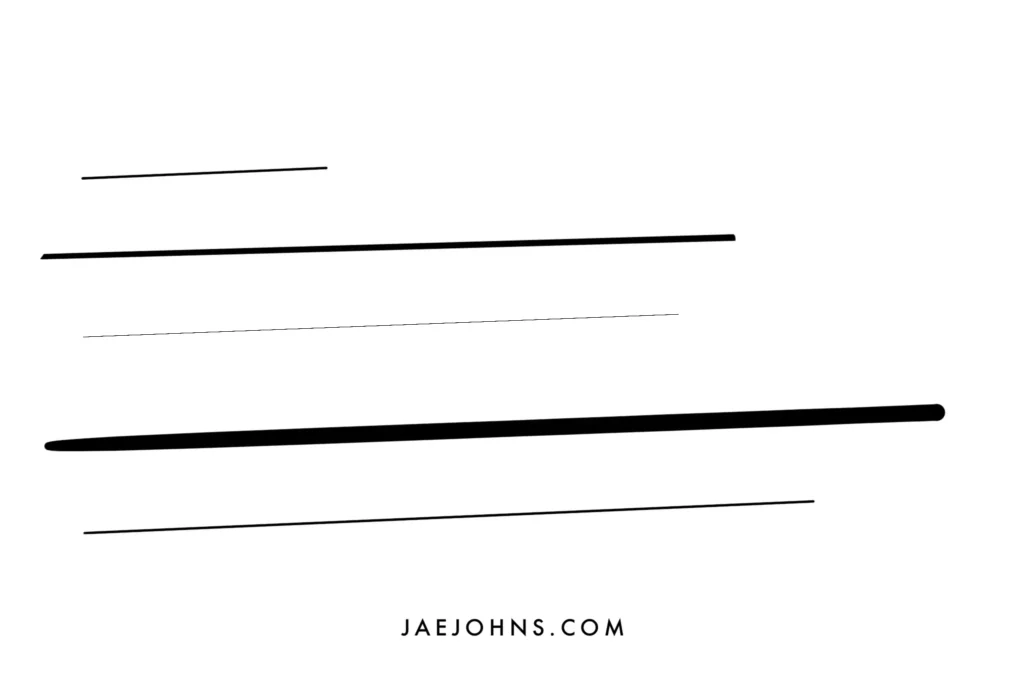
Thickness of lines can range from very thin lines, which are sketchy, lightweight, ephemeral, and gestural.
Thick lines imply strength.
They make themselves apparent and embolden a figure, pulling them to the foreground and catching the eye.
Variations in thickness, also called weight, can add a sense of dynamism to a line.
Think of it as a wavy line but created by changes in thickness rather than through movement.
Texture
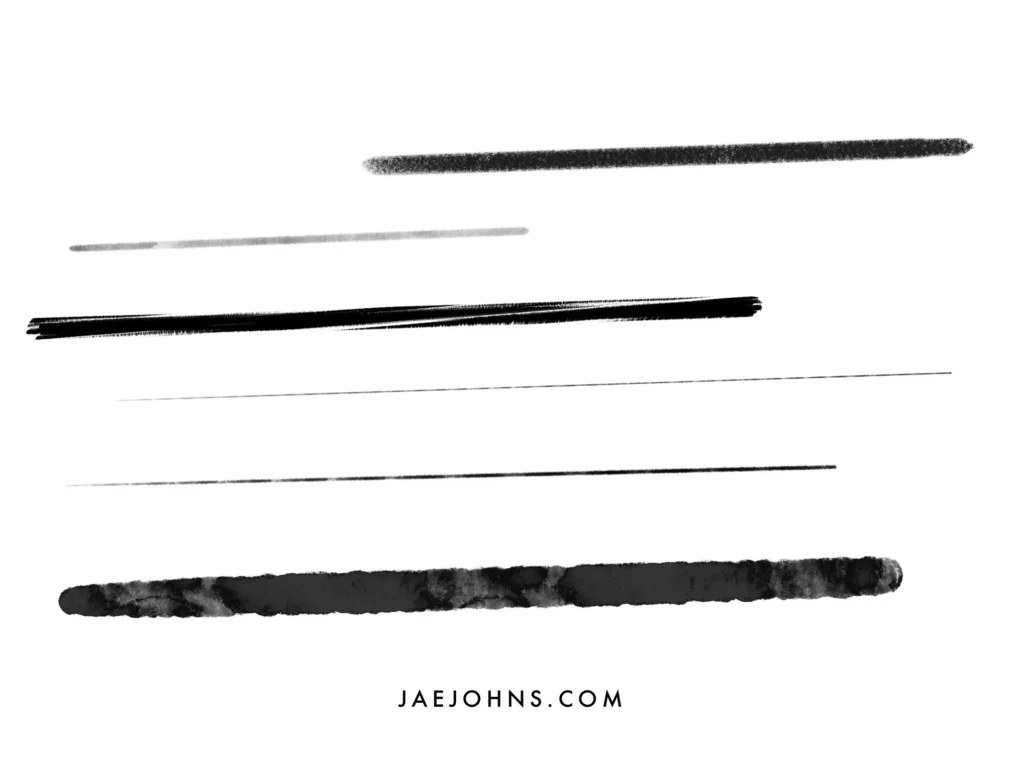
Texture refers to how smooth or rough the line is.
For example, charcoal, pastel, and chalk are rougher line mediums, whereas ink and paint are smoother.
A smoother texture tends to be more stable and clarifying, whereas a rough texture implies a darker and sketchier tone.
Direction
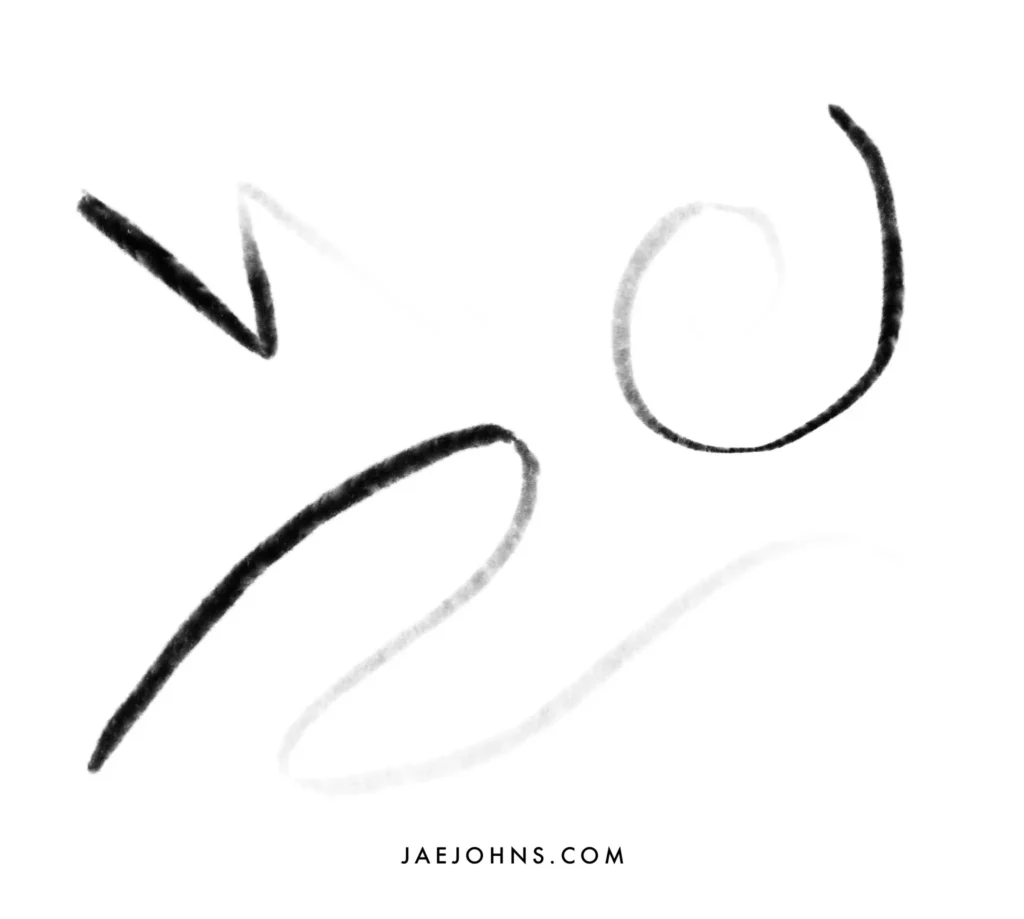
The direction of the line refers to the orientation of the line.
One way direction becomes apparent, the thicker part gives way to a thinner part as the drawing utensil lifts off the page.
Curvature
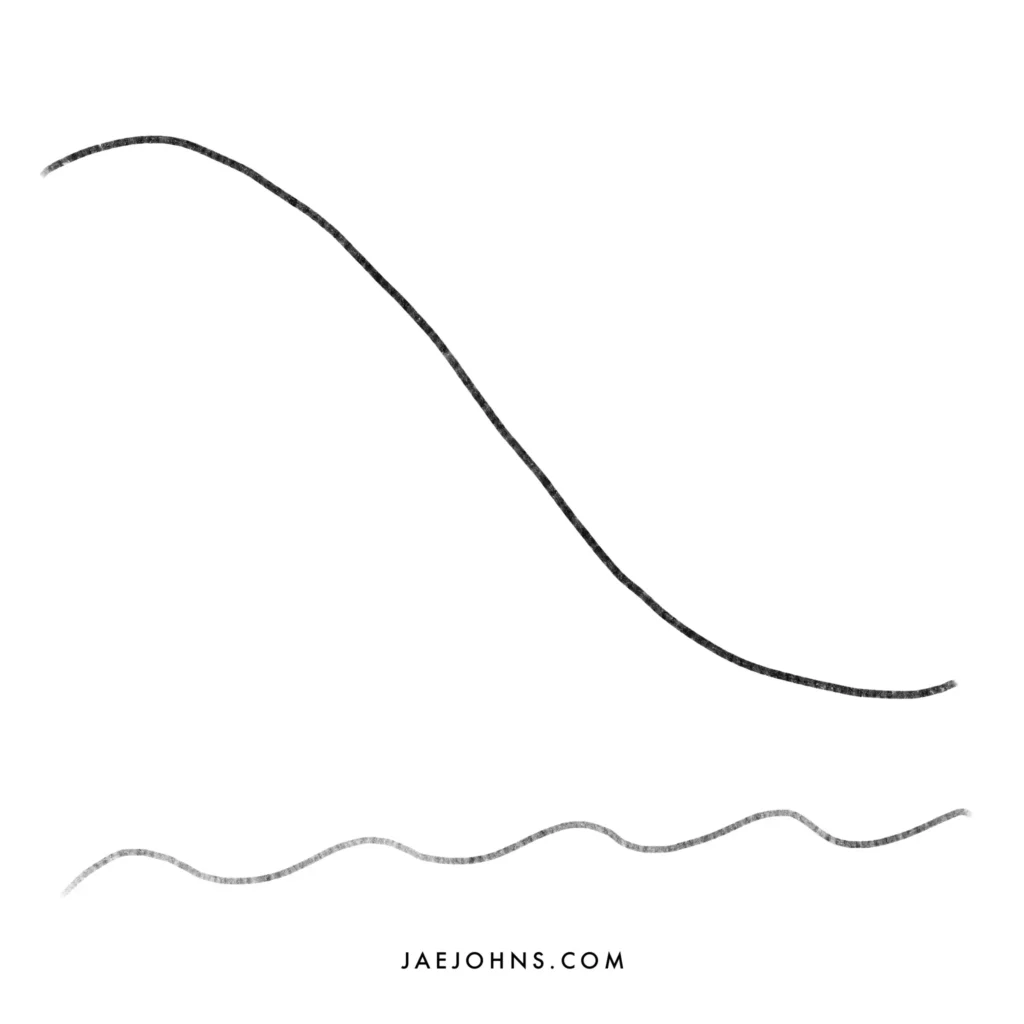
Curvature refers to the degree of curvature in a curved line.
More gradual curves are gentle and can present things like rolling hills, whereas steep curvature is more intense and vertigo-inducing.
Read Also: 15 Best Line Exercises to Practice Drawing
Four Types of Lines
Beyond these variations, there are four types of lines: solid, broken, implied, and psychological.
These refer to the way the line is present to the mind.
Solid lines
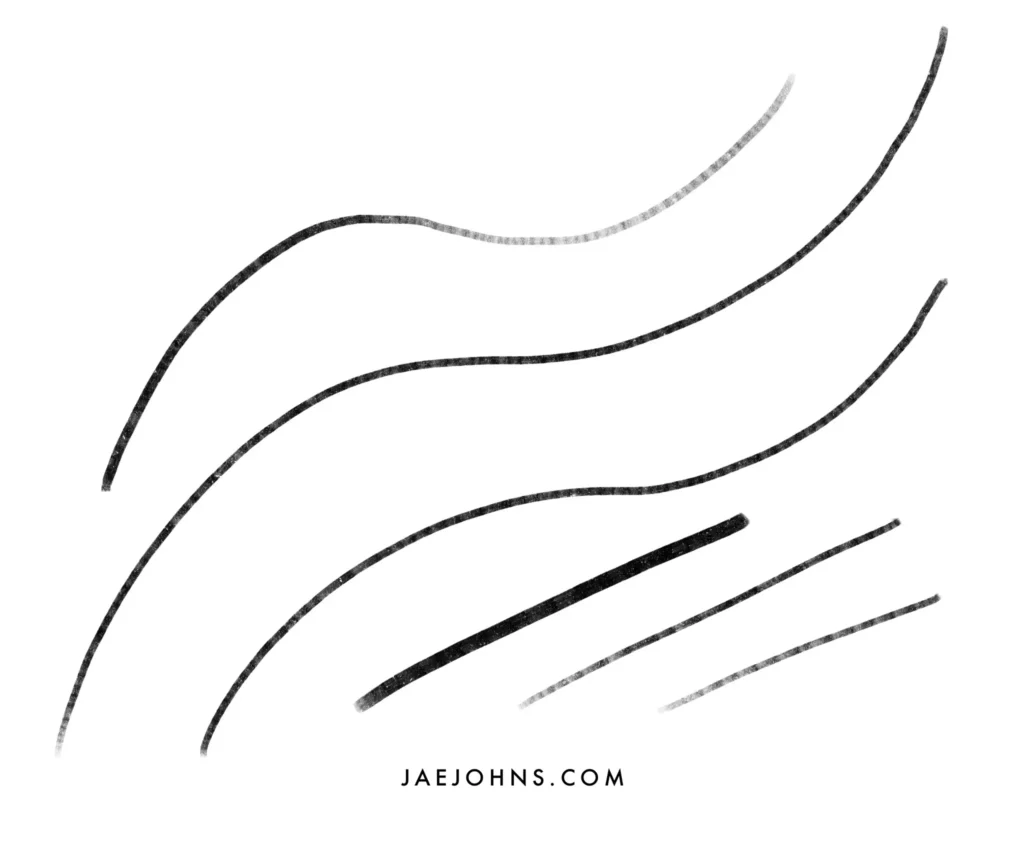
Solid lines are more apparent, which are continuous lines presented as lines.
These unbroken lines are the preferred lines for many works.
Broken lines
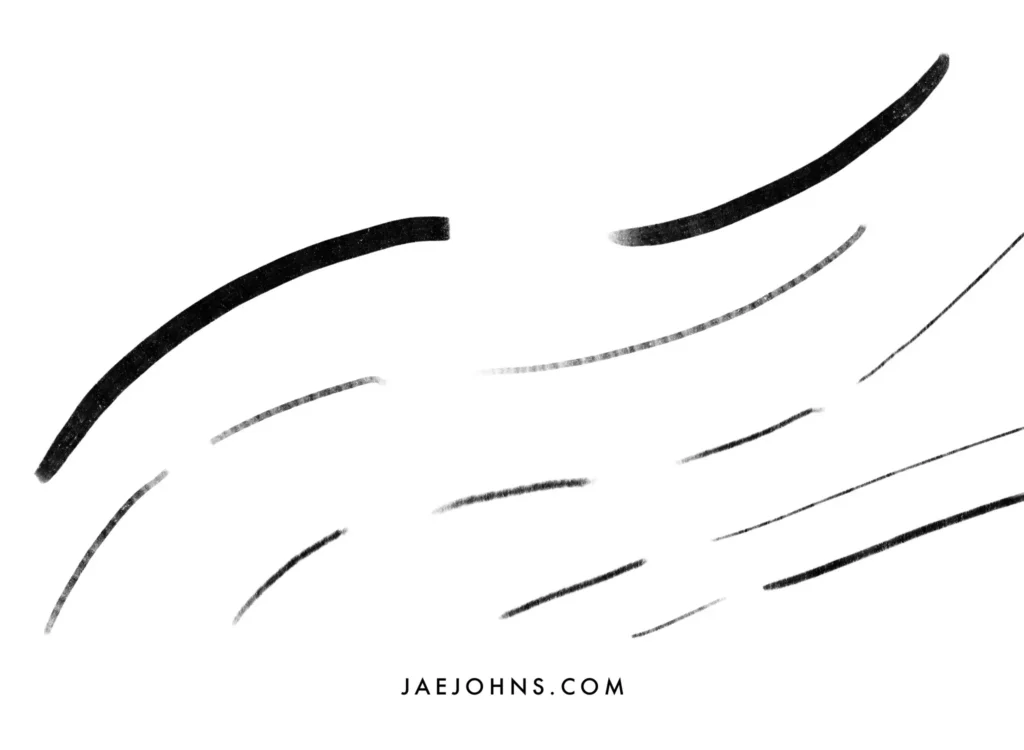
Broken or interrupted lines are similar to solid lines except with some pieces missing.
Dotted lines count as one basic form, but there are lots of variations of lines that are broken in their own ways.
Implied lines
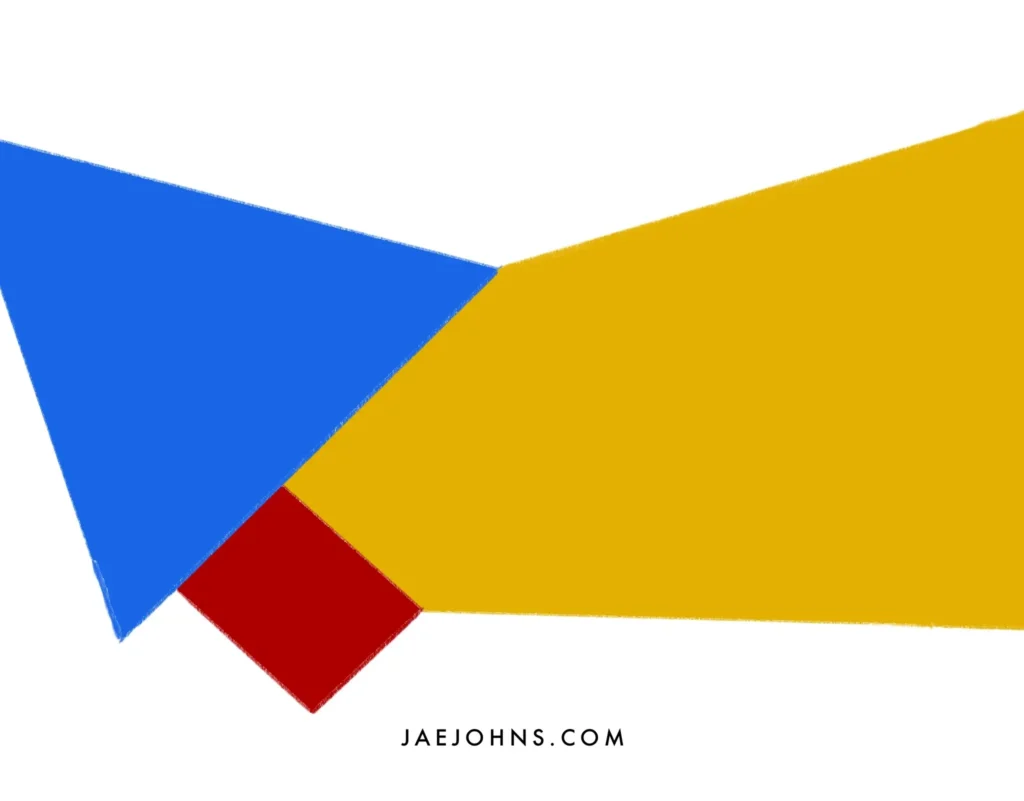
Implied lines are not drawn as a line but could be the edge of paint or other feature whose edge implies a line that wasn’t expressly drawn.
In the example above, you can see the spot the different colors meet creates a perceived line.
Psychological lines
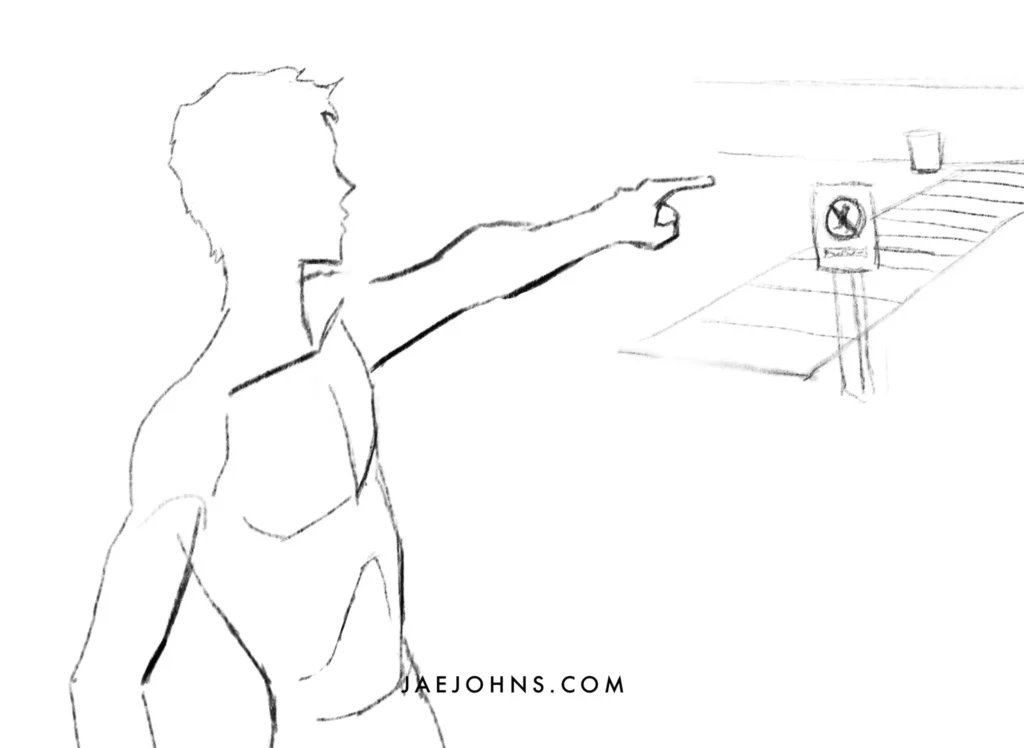
Finally, there are psychological lines in the sense of when one object points to another or there is a natural eyeline between two or more figures.
These are perhaps the most hidden lines, but they also serve the same functions of lines in general.
There are many ways you can have one object point to another.
In the example above, you see a sketch of a person pointing out to the water.
This pointing creates a psychological line in our minds that goes from the character’s finger to the right side of the sketch.
Different Types of Line
Lines are used for many different purposes in art.
These include contour lines, parallel or cross-hatched lines, implied lines, and gesture lines.
Contour lines

Contour lines are usually continuous lines that form the outline of a shape or figure.
They are what make the lines of a human body or the outlines of a landscape scene. In drawing, they are called line art.
Contour lines can be made in different thicknesses to help to accentuate the more or less essential figures.
Parallel lines
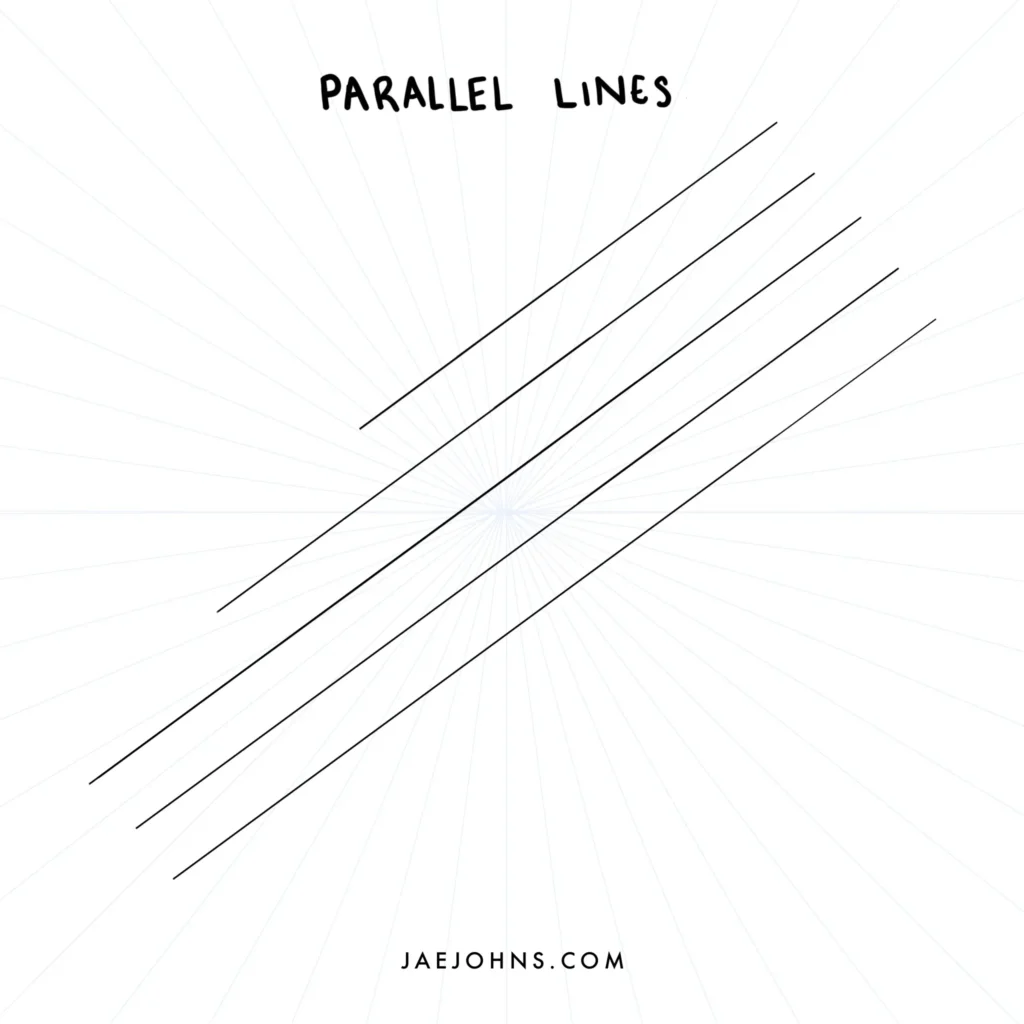
Parallel or crosshatched lines are used for shading, patterns, and texture using only lines.
In drawing and cartooning, they are widespread techniques.
The more lines are put close together, the darker the area will become, and the more shadowed it will appear.
Implied lines
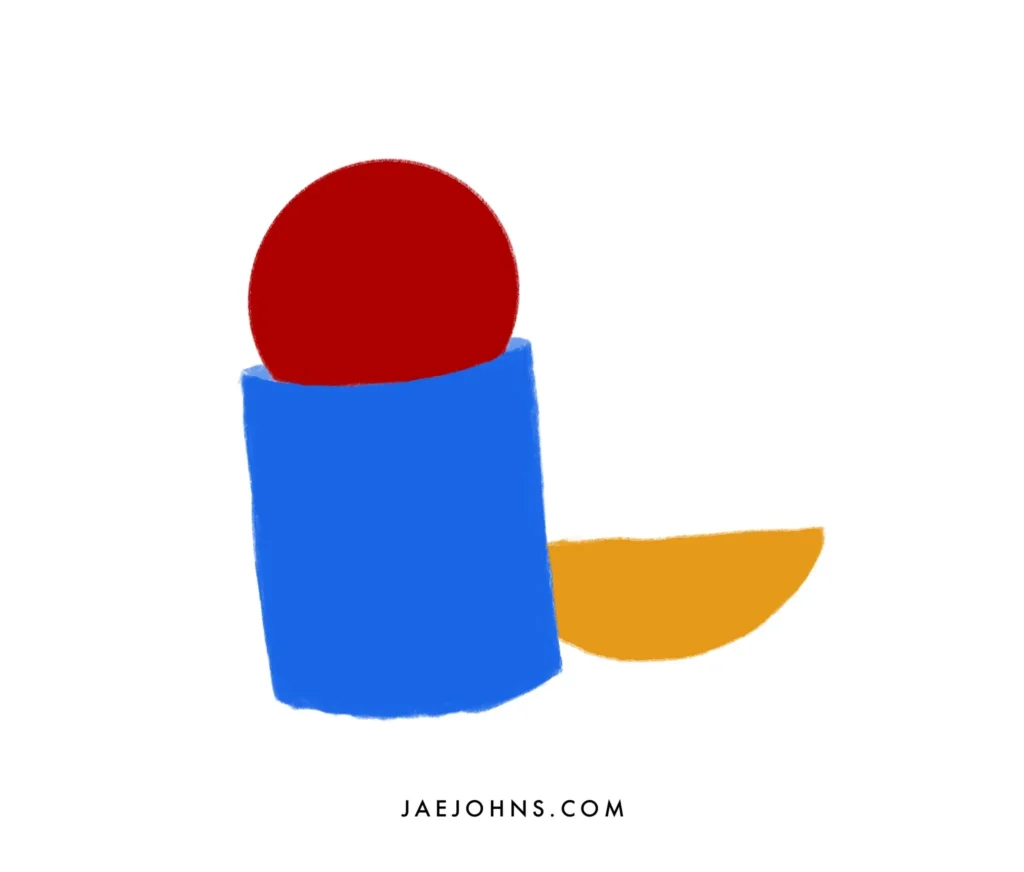
Implied lines are not present as a drawn line but are implied by the shape and edges of materials and forms.
These can be just as powerful as real lines, guiding the eye.
In the above picture, you can see a curved line the separates the red ball from the blue cylinder.
You can also see a line that separates the blue cylinder from the orange crescent.
These lines aren’t drawn but because of the contrasting colors, your mind sees a line in the art.
Gesture lines

Gesture lines are used to underpin the general shape of figures of the whole composition of a work.
They are not directly displayed as lines but form the underlying structure of the figure or composition.
The Uses of Lines
Sketching
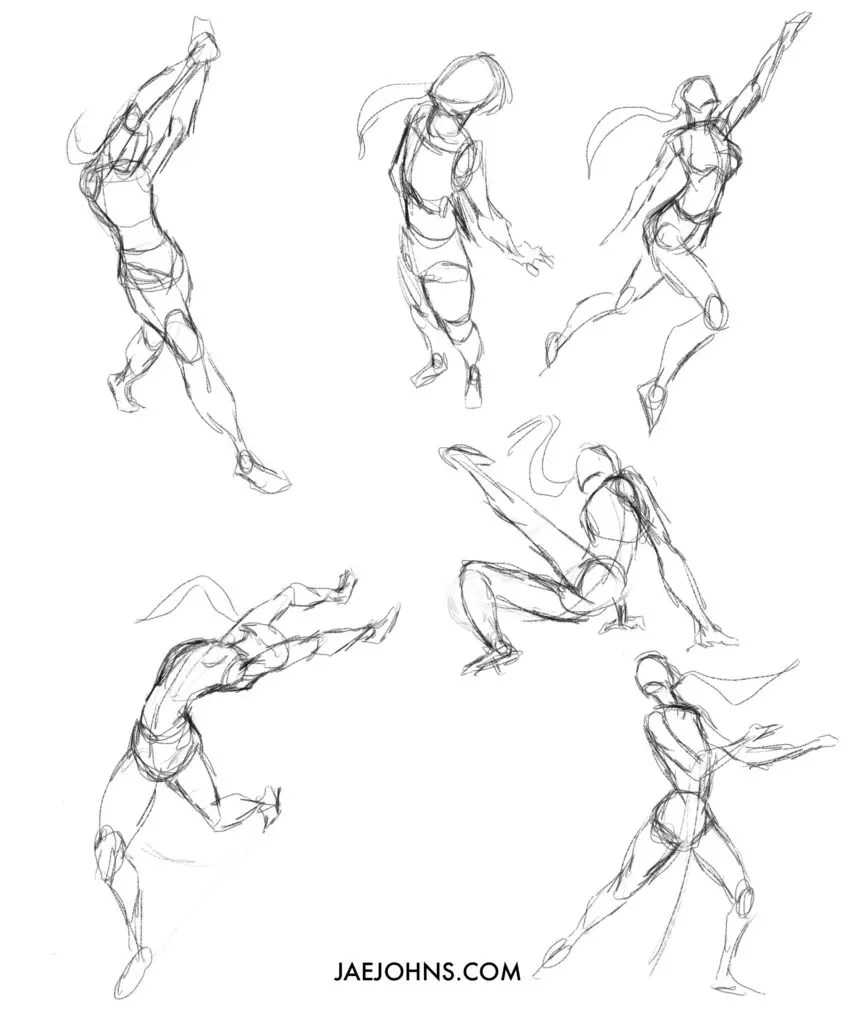
Sketching is one of the most fundamental uses of direct lines and has been done for millennia.
Gesture and contour lines sometimes mix with shading and guidelines to create the whole scaffolding of a sketch, which is often done on a piece of paper.
The feeling of movement that can be gotten from a sketch is one of the crucial elements a student artist develops into the work of quality artists.
While sketching is usually meant to be used as an underdrawing for lines in the painting, the art of sketching itself practices many of the most fundamental aspects of visual art.
Painting lessons often go hand in hand with this element of drawing, as the painting medium is still underpinned by this more fundamental technique.
Artists from Da Vinci to Picasso have had highly successful sketches that have become meaningful artworks in themselves.
Support


Sketching is just one form of support lines can give to artworks.
They can also provide grids for spacing and measurement, lines of perspective, guidelines to underpin structures.
It is also an essential method for transferring an image to scale.
White space is an important tool for artists as support along the line, and together they provide a powerful tool for making the basic geometric shapes that underpin objects.
Define Objects
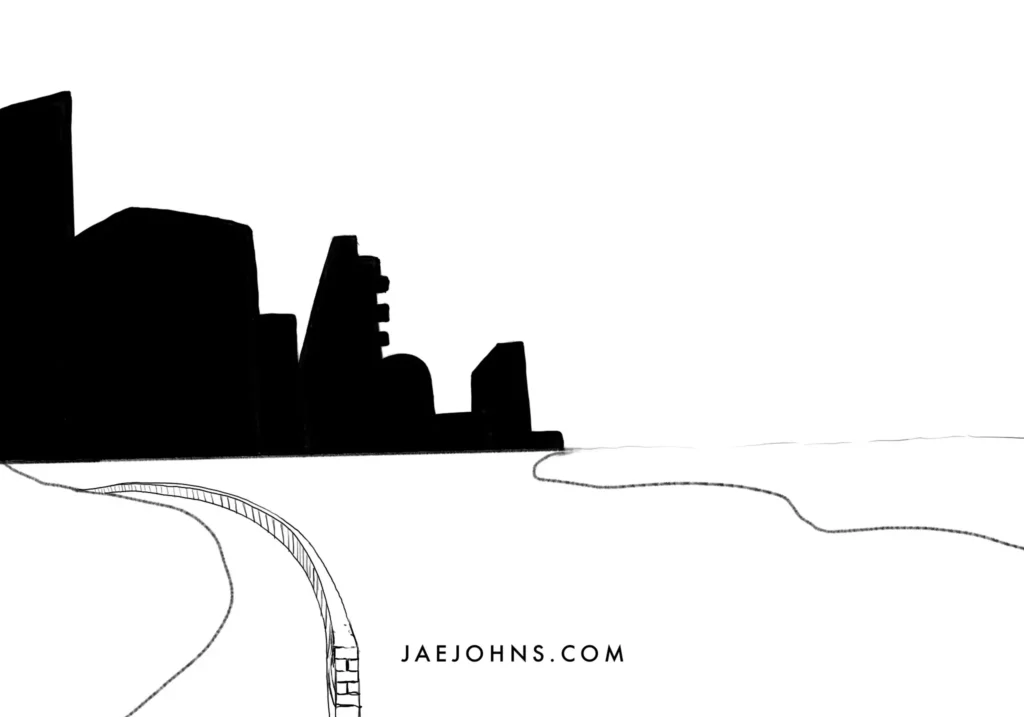
Another critical use of lines is to define objects in space.
The outline of figures is one of the most defining uses of the line, giving an object its kind of objecthood.
Defining an object is perhaps the most basic element of art.
In the image above, you will see the lines that group the city background help define the silhouette of the city on the horizon.
Shading
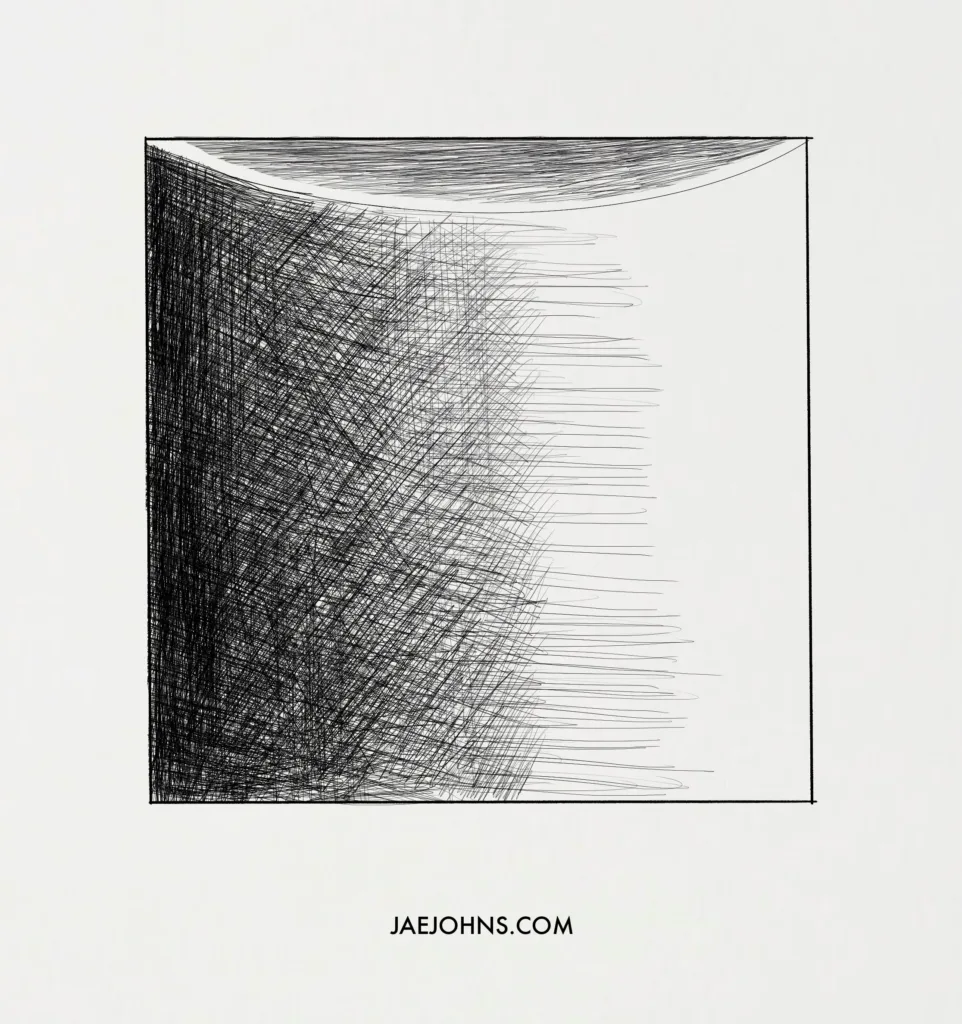
Shading is a significant use of line all on its own.
Cross contour lines, concentrated lines, and other techniques all play a role in shading.
In drawing, parallel or cross-hatching lines can add darkness, contrast, and depth to a work.
The variation of strokes in shading can also add unexpected dimensions to shading.
Positive space and negative space become important aspects of making an object’s depth stand out on the page.
Add Depth

Beyond just shading, lines can be used for depth in general.
By using perspective and curvature, artists have been using lines to create three-dimensional objects for centuries.
The way a line wraps around its object gives the visual illusion of depth.
Draw Abstractly
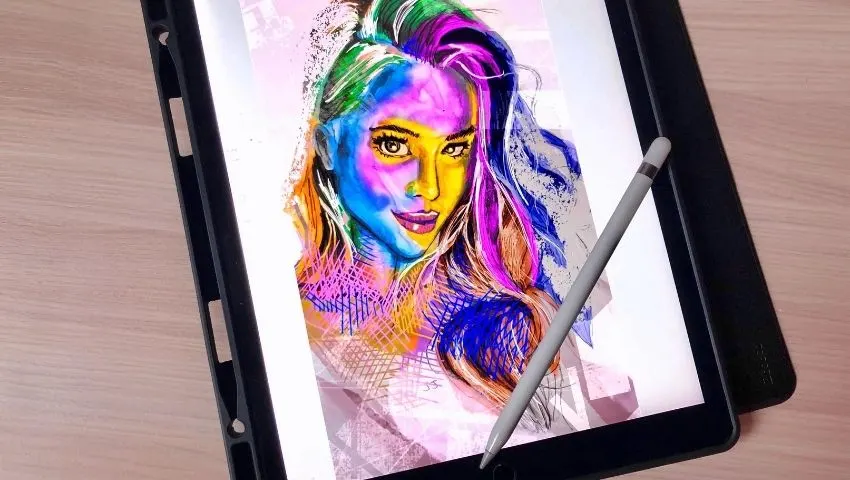
Finally, some artists like to use lines abstractly or decoratively as one might for an abstract line art piece.
Decoration lines refer to abstract lines used to create a decorative sense on their own, such as frames.
The lines in this care are not representative of anything in particular but show off their properties as lines in themselves.
The Functions of Lines in Art
Lines are used in countless different ways by artists, with their preferred uses and functions of the tool.
The five most common functions of line in art are identification of form, creation of space, organization, movement, and texture.
Identification of form
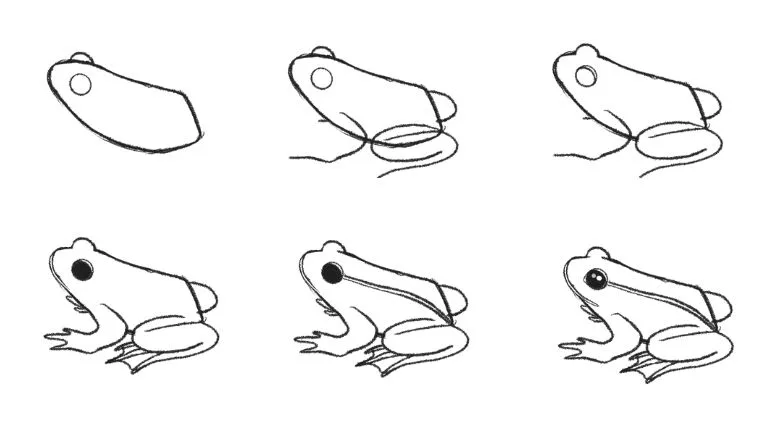
The identification of form is perhaps the most fundamental function of lines.
It’s about capturing the shape and essence of the subject.
Some artists can capture the essence of a subject or figure with just a few strokes.
Sense of space

A sense of space is one of the great powers of line through perspective and other visual illusions, pushing the two-dimensional space of the flat surface into three dimensions.
Other factors such as tone, width, weight, and the intensity of lines can add to the effect of space, luring the eye into the world of the painting.
For example, far away objects will tend to be sketchier, lighter, and thinner in terms of line.
Conversely, thicker and darker lines clarify close objects.
Organization

Organization refers to the ability of a line to provide for the underdrawing and sketching of a larger work.
It can also separate or group elements on a page in design or graphic novels.
Organization can also refer to the use of lines to decide the composition of a work of art and distinguish foreground from background.
In the above image, the perspective lines help organize the buildings on the left side and right side.
Movement

Movement is the use of a line to guide the eye through the work of art in different directions.
This can be left to right, up to down, or even into depth.
It can also be used to show the movement of a subject or figure, such as action lines in a comic book.
Texture
Finally, the texture of a line can imply different emotional depths.
Texture can be created using differences in continuous lines to broken lines or a different tool to produce a messier line.
Conclusion
Line in art is an absolute fundamental to artwork.
Without the line, the ability to present three-dimensional subjects and scenes on a flat surface would be impossible.
But even in itself, the line has a beauty and power in its own abstract way, gaining from your familiarity and association with so many lines in real life.
Using our intuition of movement, outline, and perspective from life into the use of line in the artwork is one of the great signs of mastery from an artist.

